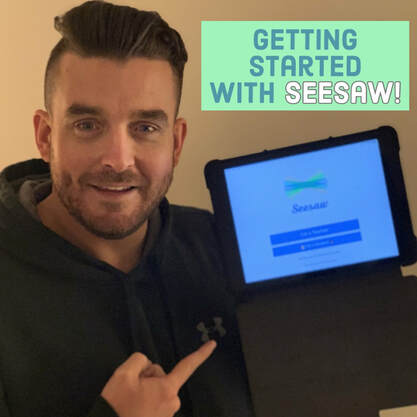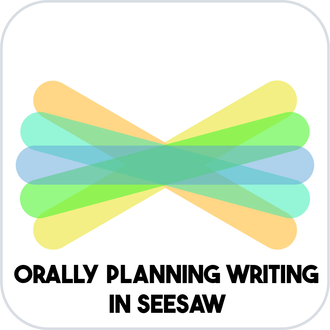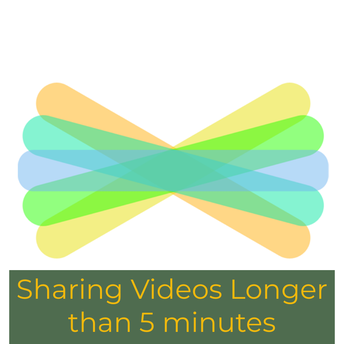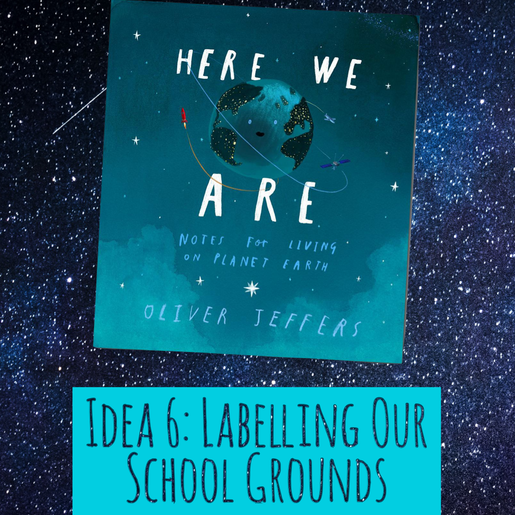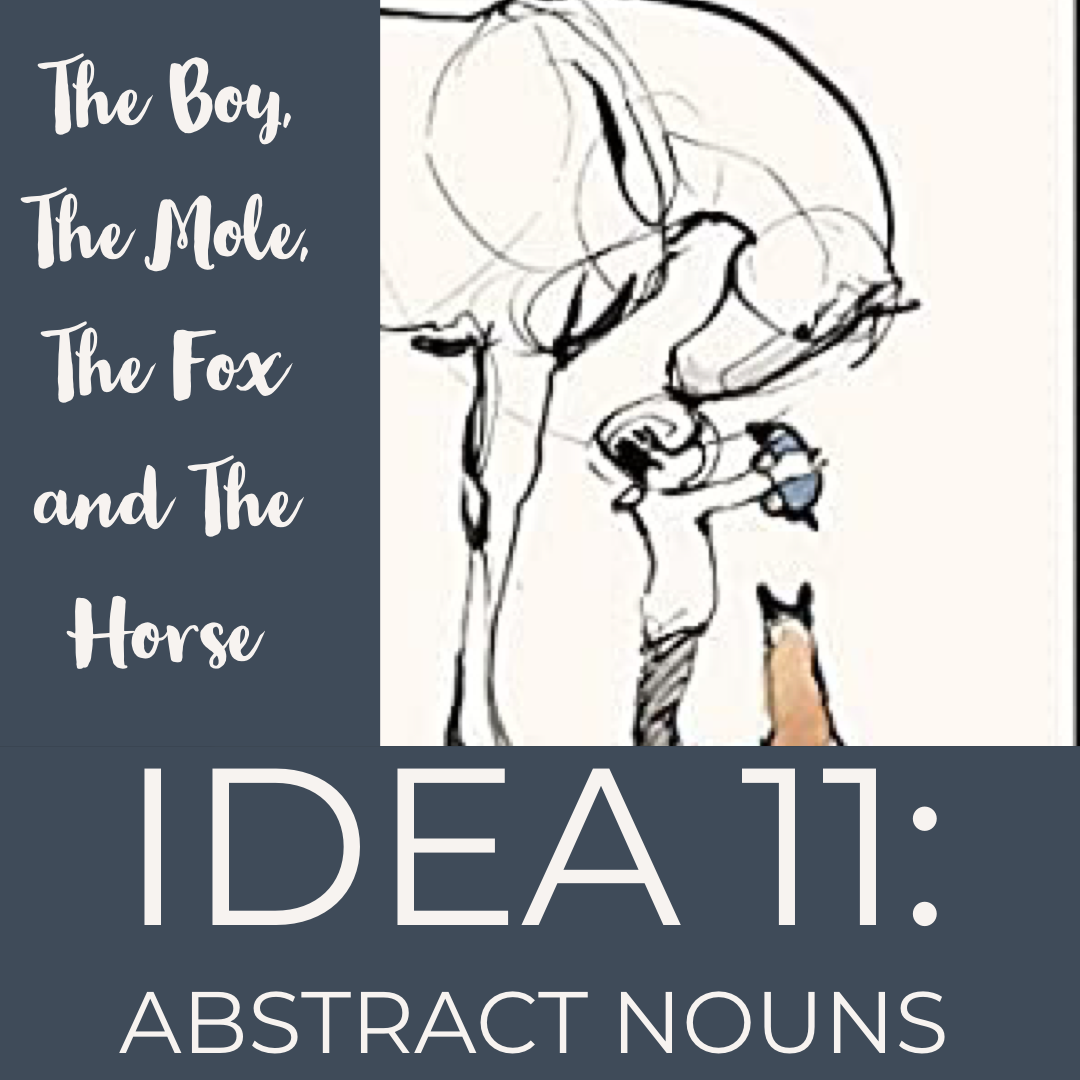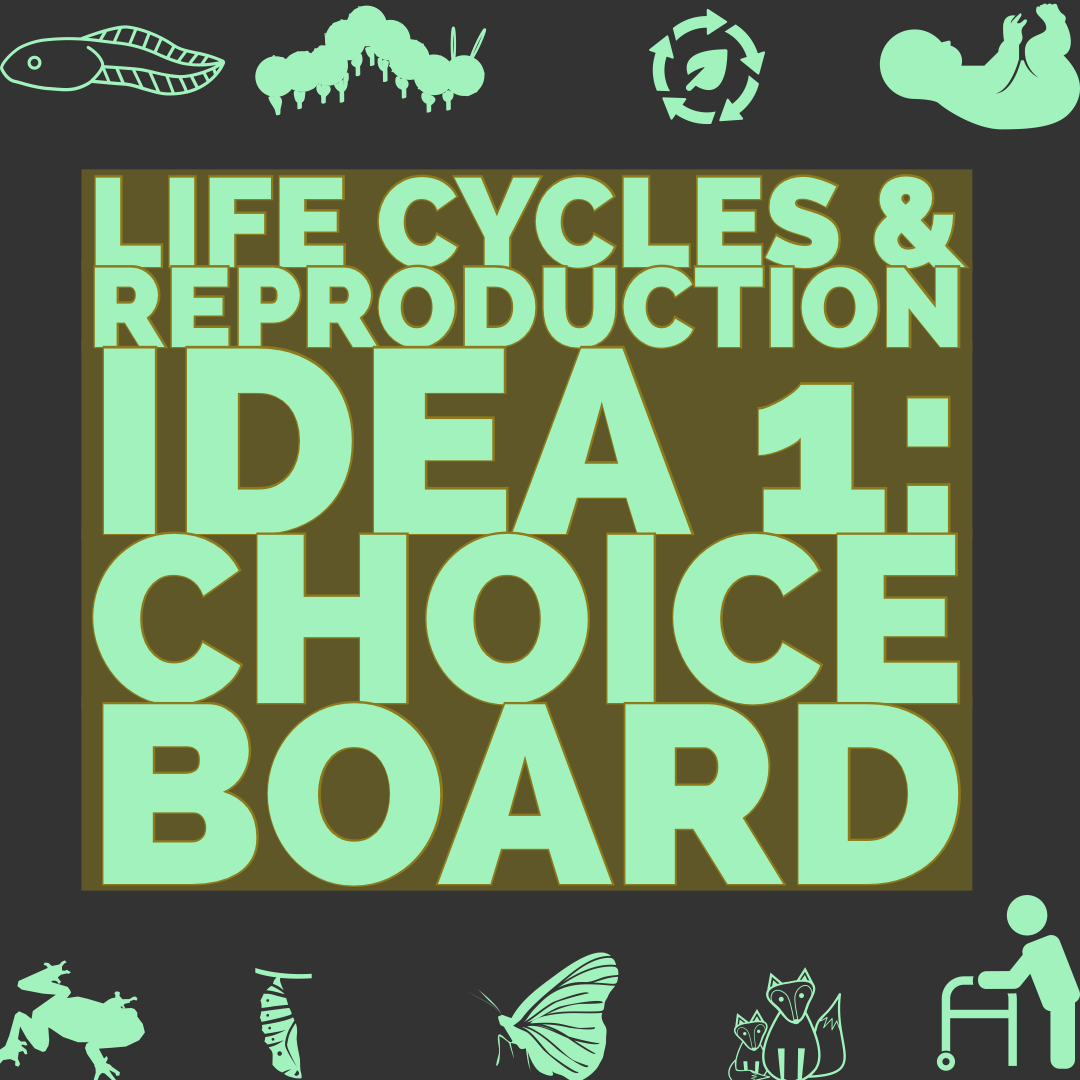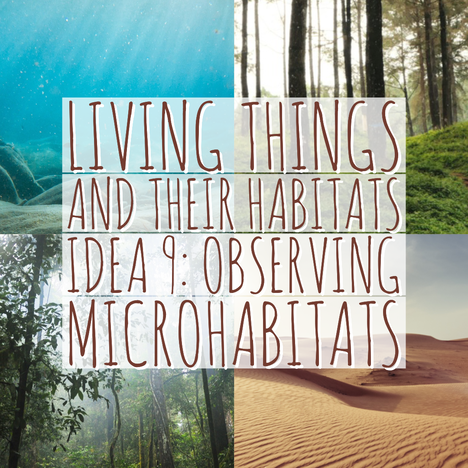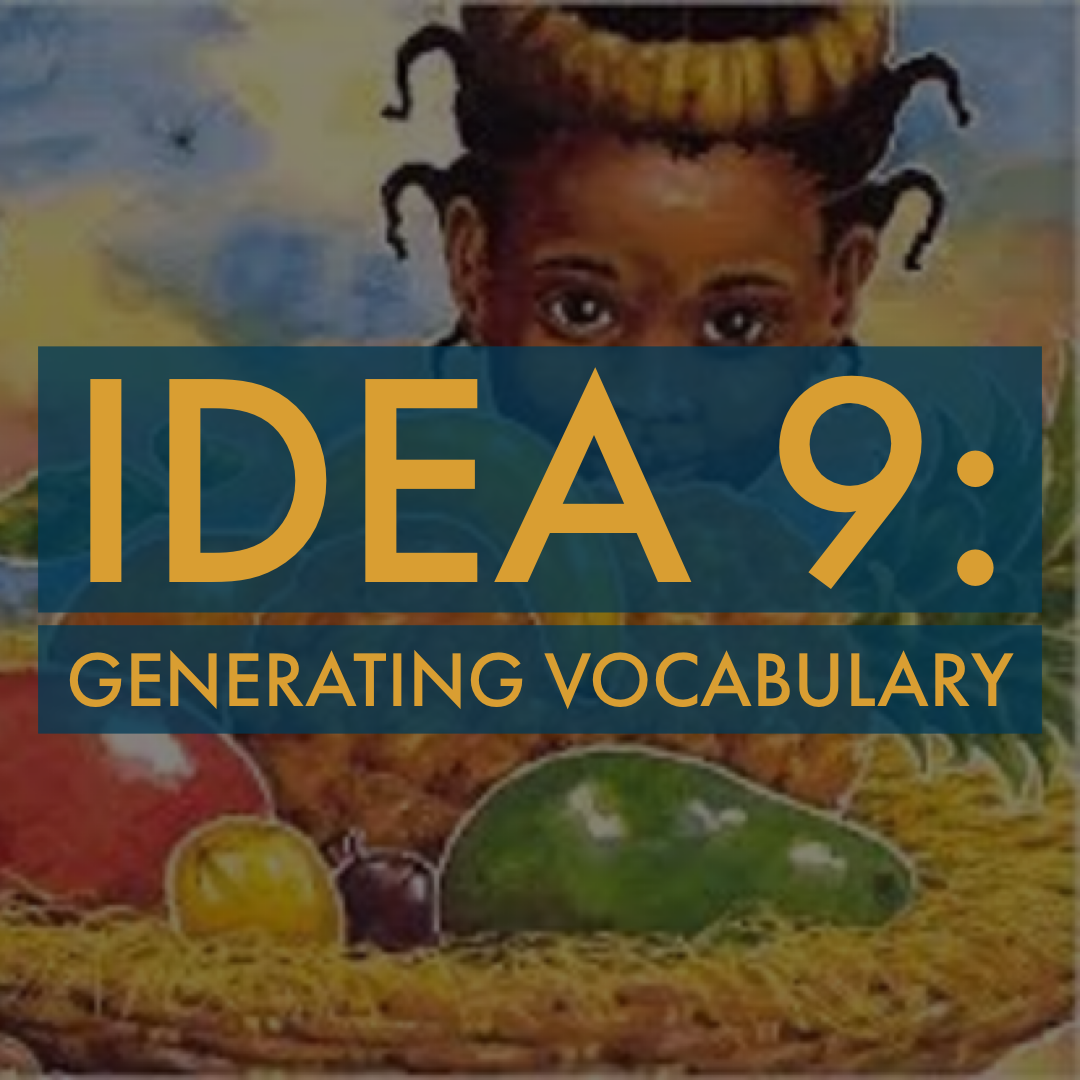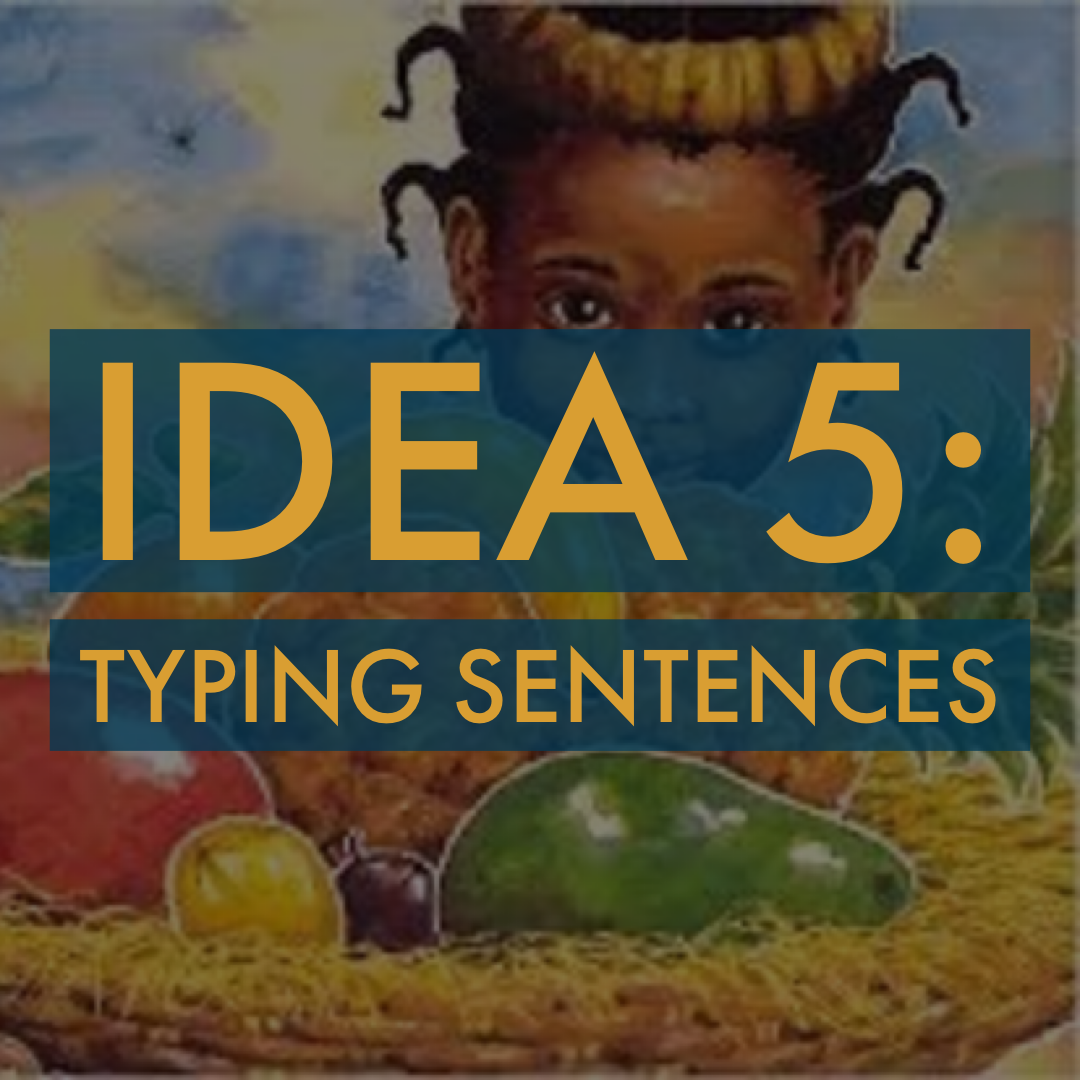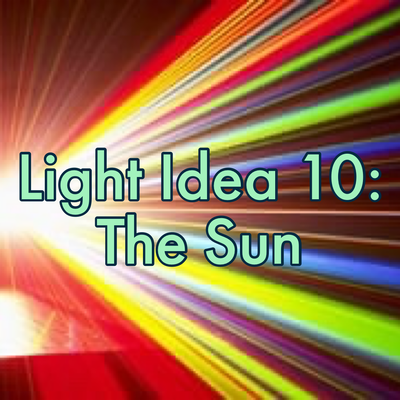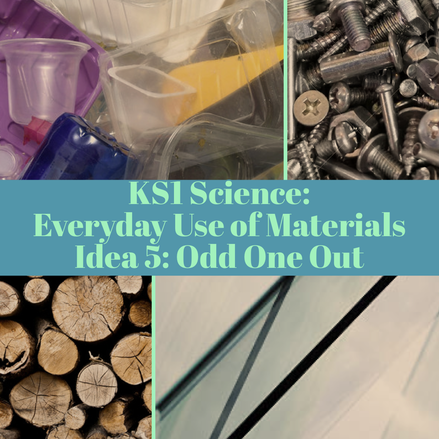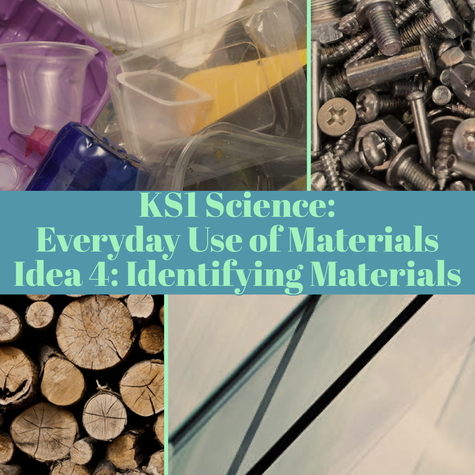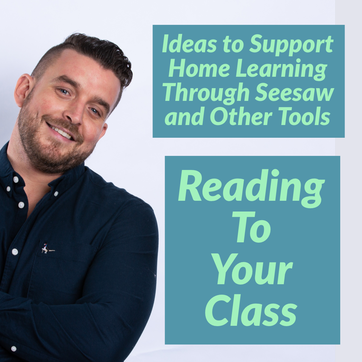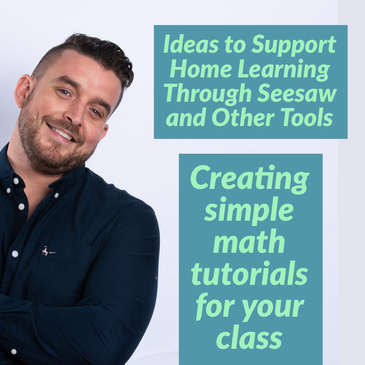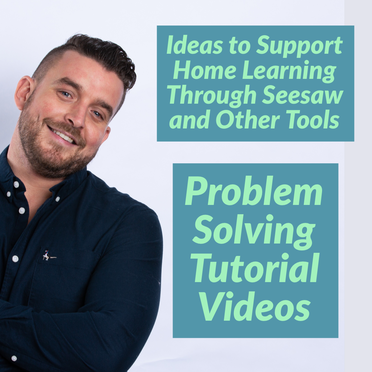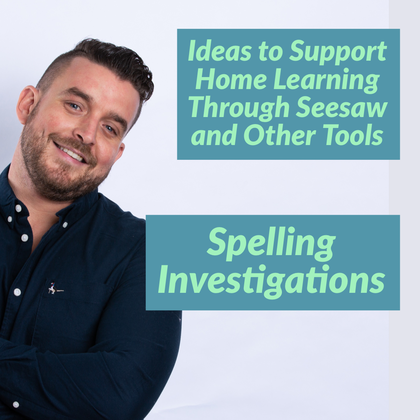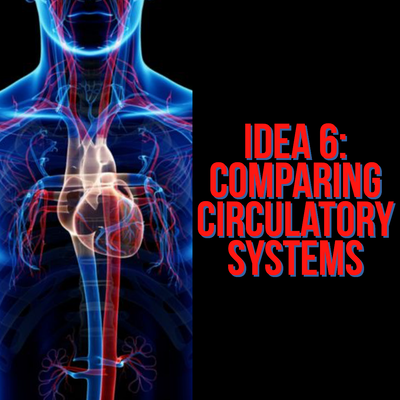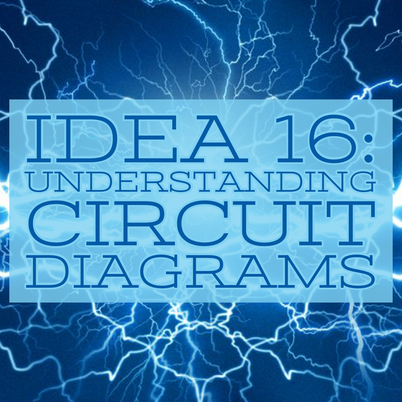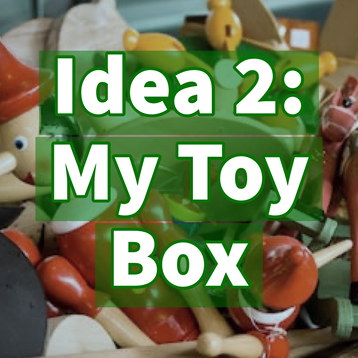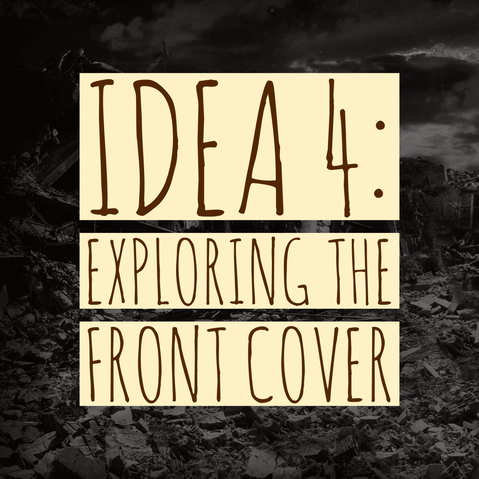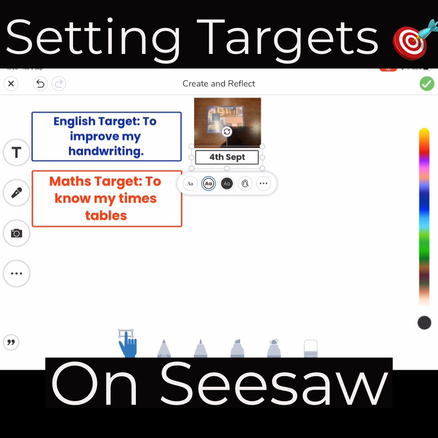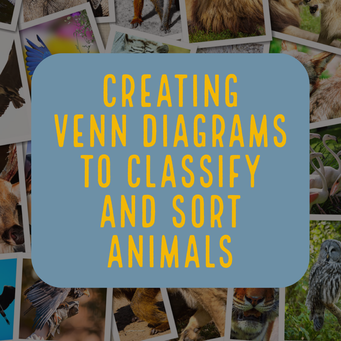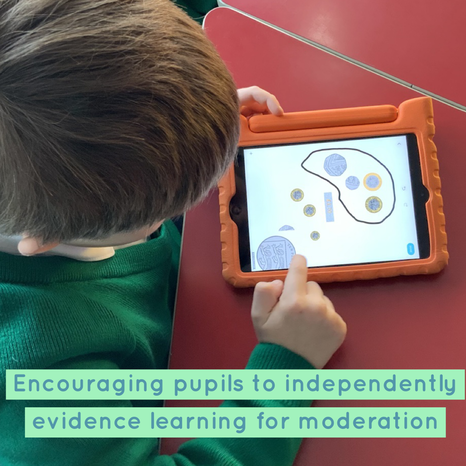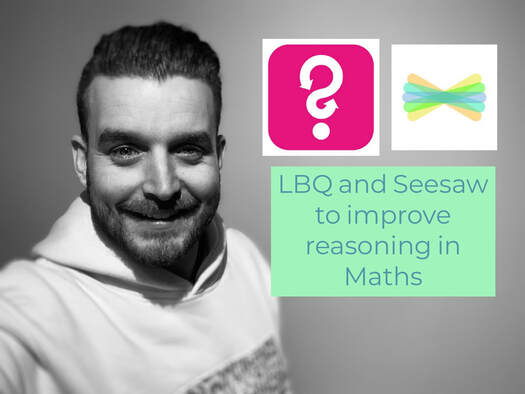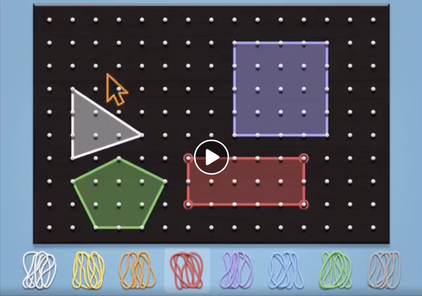Access Mr P's Whole School Seesaw for Remote Learning CPD when you subscribe as a schoolDue to the overwhelming interest in Mr P's CPD for Remote Learning. We have uploaded the full session to the website. It is available to everyone who subscribes for a whole school licence. If you have subscribed as a school click the picture. Click the button below to sign up your school.
|
Basic Tutorial for the app
Exploring The Creative Tools in SeesawIn this video, Mr P explores the drawing tools available in Seesaw. This is a basic tutorial of all the features and there are plenty of ways these tools can be used effectively to allow children to demonstrate their understanding across the curriculum.
|
Getting Started with SeesawThe first in a series of videos that will look at the app that has changed my life as a teacher as far as working smarter, not harder! This is a simple introduction to the app Seesaw which is available on any device.
Click the picture to access the video if you have subscribed. Click here if you need to subscribe on Facebook. |
Giving pupils ownership of their learning with seesawBuilding on from my previous post on Seesaw (please scroll back through and watch) this little video introduces the folders option and how your pupils can log in and evidence their own learning. This not only makes your life easier but gets the pupils to build independence and skills as digital citizens.
Click the picture to access the video if you have subscribed. Click here if you need to subscribe on Facebook. |
Using Activities in SeesawUsing the Activities tool in Seesaw.
This will hopefully save you loads of time so you don’t start everyday like this - https://www.facebook.com/189400264556867/posts/1034648970031988/ Click the picture to access the video if you have subscribed. Click here if you need to subscribe on Facebook. |
GIving Effective Oral Feedback Through SeesawAs promised from the Live Video tonight, here is a step-by-step guide for how to give effective oral feedback through Seesaw. Remember, I am not doing this for everything, just where it fits, which works if the feedback policy I shared, is in place.
Click the picture to access the video if you have subscribed. Click here if you need to subscribe on Facebook. |
Examples of using the app across the curriculum
Creating animations in seesawThe newest iOS update for your iPad makes it easier than ever to create fun animations on Seesaw! In this video, Mr P shows you how to use Seesaw's creative tools to make cartoon animations. Plus, learn how to use the iPad Photos app's new feature to cut out objects and characters so they appear without a white background when added to Seesaw.
Watch the following video if you have iPads: Watch the following video if you are using Chromebooks or laptops
|
ORALLY PLANNING WRITING IN SEESAWIn this video, Mr P explores a few different ways in which students can orally plan their writing using the app Seesaw. This can be an incredibly powerful way for children to develop their writing by orally recording ideas before putting pen to paper. This means the content and ideas can be listened back to and students can then focus more on the spelling, punctuation, grammar and handwriting.
|
Identifying Text Features in SeesawIn this video, Mr P explores how Seesaw can be used to support children in deconstructing texts by identifying, highlighting and discussing features. This would be accessible for pupils from KS1 upwards.
|
KS2 SCIENCE SOUND IDEA 1 - MINDMAPHere is the first video in a new series of videos linked to the KS2 Science Topic of Sound. As always, these ideas are not to be followed as a scheme of work, instead showcase how creative tech can be used to enhance learning during this topic.
In this first idea, pupils create a mindmap to show what they already know about sound. Click the picture to access the video if you have subscribed to Facebook. Click here if you need to subscribe on Facebook. |
SAVING LONGER VIDEOS TO SEESAWFor any schools using Seesaw, this video shares a couple of workarounds of the 5-minute video length limit.
Click the picture to access the video if you have subscribed through Facebook. Click here if you need to subscribe on Facebook. |
SEESAW DAILY TIMETABLESFor any schools using Seesaw for Remote Learning, here is another useful tip to help guide pupils when sharing lessons and task if they're learning from home.
Click the picture to access the video if you have subscribed through Facebook. Click here if you need to subscribe on Facebook. |
THE UK IDEA 6 - UK ADDRESSESHere is the next video in the series linked to the Geography Topic of The UK.
In this idea, pupils demonstrate their understanding when writing an address on an envelope. Click the picture to access the video if you have subscribed to Facebook. Click here if you need to subscribe on Facebook. |
THE UK IDEA 2 - LABELLING MAP OF THE UKHere is the next video in the series linked to the Geography Topic of The UK.
In this idea, we look at a labelling a map of the UK. Click the picture to access the video if you have subscribed to Facebook. Click here if you need to subscribe on Facebook. |
FORCES IDEA 11- IS IT MAGNETIC?Here is the idea in the series of videos linked to the KS2 Science Topic of Forces and Magnets in Year 3 and Forces in Action in Year 5.
In this next idea, pupils explore materials and whether they are magnetic or not. Click the picture to access the video if you have subscribed to Facebook. Click here if you need to subscribe on Facebook. |
FORCES IDEA 8 - INVESTIGATING FRICTIONHere is the idea in the series of videos linked to the KS2 Science Topic of Forces and Magnets in Year 3 and Forces in Action in Year 5.
In this next idea, pupils carry out an investigation into Friction using Seesaw. Click the picture to access the video if you have subscribed to Facebook. Click here if you need to subscribe on Facebook. |
EXTREME EARTH IDEA 16 - REASONS FOR AND AGAINST LIVING NEAR A VOLCANOHere is the next video in the series linked to the Geography Topic of Extreme Earth.
In this idea, pupils generate reasons for and against living near a volcano. Click the picture to access the video if you have subscribed to Facebook. Click here if you need to subscribe on Facebook. |
EXTREME EARTH IDEA 10 - TECTONIC PLATE MAPHere is the next video in the series linked to the Geography Topic of Extreme Earth.
In this idea, pupils mark a map to show their understanding of tectonic plates around the Earth. Click the picture to access the video if you have subscribed to Facebook. Click here if you need to subscribe on Facebook. |
EXTREME EARTH IDEA 5 - LABELLING DIAGRAMHere is the next video in the series linked to the Geography Topic of Extreme Earth.
In this idea, pupils label a diagram of the layers of the Earth. Click the picture to access the video if you have subscribed to Facebook. Click here if you need to subscribe on Facebook. |
VIKING IDEA 18 - VIKING LIFE RESEARCHHere is the next video in the series linked to the KS2 History topic of the Vikings.
In this next idea, pupils create a mindmap collating facts about life as a viking. Click the picture to access the video if you have subscribed through Facebook. Click here if you need to subscribe on Facebook. |
VIKINGS IDEA 8 - WHY DID THE VIKINGS INVADE?Here is the next video in the series linked to the KS2 History topic of the Vikings.
In this next idea, pupils learn and explain the reasons why the Vikings invading the UK. Click the picture to access the video if you have subscribed through Facebook. Click here if you need to subscribe on Facebook. |
GREAT FIRE OF LONDON IDEA 19 - LOOKING FOR DIFFERENCES PRE FIRE TO POST FIREHere is the next video in the series linked to the Great Fire of London.
In this video, pupils take an image of the London skyline before and after the fire and look at identifying differences and the impact of the fire. Click the picture to access the video if you have subscribed through Facebook. Click here if you need to subscribe on Facebook. |
GREAT FIRE OF LONDON IDEA 14 - SEQUENCING THE EVENTSHere is the next video in the series linked to the Great Fire of London.
In this video, pupils look at demonstrating their understanding of the Great Fire of London by sequencing the significant events into the correct order being able to then explain orally what happened. Click the picture to access the video if you have subscribed through Facebook. Click here if you need to subscribe on Facebook. |
GREAT FIRE OF LONDON IDEA 13 - LABELLING A MAP OF THE FIREHere is the next video in the series linked to the Great Fire of London.
In this video, pupils take a map of the area affected by the first and look at labelling significant places and colouring the affected areas. Click the picture to access the video if you have subscribed through Facebook. Click here if you need to subscribe on Facebook. |
GREAT FIRE OF LONDON IDEA 12- CHOICE BOARD WEB LINKSHere is the next video in the series linked to the Great Fire of London.
In this video, to learn more about the events of the Great Fire, teachers can create a choice board of weblinks through Seesaw that pupils can access to research and learn more about the event. Click the picture to access the video if you have subscribed through Facebook. Click here if you need to subscribe on Facebook. |
HERE WE ARE BY OLIVER JEFFERS IDEA 6 - LABELLING OUR SCHOOL GROUNDSHere is the next video in the series linked to the fantastic book, Here We Are: Notes for Living on Planet Earth by Oliver Jeffers, https://amzn.to/34mUfUp.
In this next idea, pupils take a closer look at their school grounds by labelling a birds-eye view image of the school grounds. Click the picture to access the video if you have subscribed through Facebook. Click here if you need to subscribe on Facebook. |
HERE WE ARE BY OLIVER JEFFERS IDEA 1 - WHAT IS THE SAME? WHAT IS DIFFERENT?Here is the first in a new series of videos linked to the fantastic book, Here We Are: Notes for Living on Planet Earth by Oliver Jeffers, https://amzn.to/34mUfUp. In this series of videos, we look at creative ways to explore the themes and ideas of the book through technology. As always, these videos are not to be followed as a scheme of work, instead showcase how creative technology can support, empower and make learning accessible for our pupils.
In this first idea, we explore what is different and what is the same about the new school year. Click the picture to access the video if you have subscribed through Facebook. Click here if you need to subscribe on Facebook. |
THE BOY, THE MOLE, THE FOX AND THE HORSE IDEA 11 - ABSTRACT NOUNSHere is the next video in the based on Charlie Mackesy's beautiful book - The Boy, The Mole, The Fox and The Horse. I have collated plenty of ideas you can use to embed creative technology when exploring this book.
In this idea, we look at collecting examples of concrete nouns and abstract nouns and exploring the differences. Click the picture to access the video if you have subscribed through Facebook. Click here if you need to subscribe on Facebook. |
THE BOY, THE MOLE, THE FOX AND THE HORSE IDEA 3 - DISCUSSING ILLUSTRATIONSHere is the next video in the based on Charlie Mackesy's beautiful book - The Boy, The Mole, The Fox and The Horse. I have collated plenty of ideas you can use to embed creative technology when exploring this book.
In this next idea, children are given the opportunity to orally explore some of the illustrations and explain the impact they have on the rest of the story. Click the picture to access the video if you have subscribed through Facebook. Click here if you need to subscribe on Facebook. |
ANGLO SAXON IDEA 12- ARTEFACTSHere is the next video in the series linked to the KS2 History topic of Anglo Saxons.
In this video, pupils explore different Anglo Saxon artefacts to learn more about life during this time. |
PLANTS IDEA 19 - LABELLING A FLOWERHere is the next video in a new series linked to the Science topic of Plants. We have tried to cover ideas from the KS1 Science curriculum and Year 3 Science curriculum.
In this next idea linked with KS2, pupils demonstrate their knowledge and understanding by labelling the features of a flower. |
PLANTS IDEA 11 - LABELLING A TREEHere is the next video in a new series linked to the Science topic of Plants. We have tried to cover ideas from the KS1 Science curriculum and Year 3 Science curriculum.
In this next idea linked with KS1, pupils look at labelling the features of trees. |
PLANTS IDEA 10 - EVERGREEN VS DECIDUOUSHere is the next video in a new series linked to the Science topic of Plants. We have tried to cover ideas from the KS1 Science curriculum and Year 3 Science curriculum.
In this next idea linked with KS1, pupils look at sorting trees into two categories of evergreen and deciduous and discussing the differences. |
THE MAYANS IDEA 10 - LABELLING MAYAN CITIESHere is the next idea in the series linked to the KS2 History topic of the Mayans. In this next idea, pupils use their knowledge from the previous ideas to create a labelled map of the major Mayan settlements.
|
LIFE CYCLES AND REPRODUCTION IDEA 11- SEXUAL VS ASEXUALHere is the next video in the series looking at Life Cycles and Reproduction in KS2 Science.
In this next video, pupils consider the advantages and disadvantages of sexual vs asexual reproduction. Click the picture to access the video if you have subscribed to Facebook. Click here if you need to subscribe on Facebook. |
LIFE CYCLES AND REPRODUCTION IDEA 3 - LABELLING A PLANTHere is the next video in the series looking at Life Cycles and Reproduction in KS2 Science.
In this next video, pupils demonstrate their knowledge of plants by labelling all the different features. Click the picture to access the video if you have subscribed to Facebook. Click here if you need to subscribe on Facebook. |
LIFE CYCLES AND REPRODUCTION IDEA 1 - CHOICE BOARDHere is the first in a new series of videos that looks to cover objectives in the Year 5 Science curriculum of Living things and their Habitats and Animals including Humans. As always, these topic pages are not to be used as a scheme of work but instead showcase how creative tech can be used to enhance, support, empower and make learning accessible.
In this first video, we look at using a choice board with Google Slides and Seesaw for children to start learning about this topic. Click the picture to access the video if you have subscribed to Facebook. Click here if you need to subscribe on Facebook. |
ARTHUR AND THE GOLDEN ROPE IDEA 13- EXPLORING STEREOTYPESHere is the next idea in the series based around the fantastic book: Arthur and The Golden Rope by Joe Todd Stanton.
In this idea, pupils explore where different stereotypes come from and discuss how to challenge them. Click the picture to access the video if you have subscribed through Facebook. Click here if you need to subscribe on Facebook. |
ARTHUR AND THE GOLDEN ROPE IDEA 12 - GENDER STEREOTYPING JOBSHere is the next idea in the series based around the fantastic book: Arthur and The Golden Rope by Joe Todd Stanton.
In this idea, pupils take some of the assumptions of the townsfolk and think about how stereotypes affect them. Click the picture to access the video if you have subscribed through Facebook. Click here if you need to subscribe on Facebook. |
ARTHUR AND THE GOLDEN ROPE IDEA 8 - ARTHUR'S CHARACTERISTICS WITH EVIDENCE FROM TEXTHere is the next idea in the series based around the fantastic book: Arthur and The Golden Rope by Joe Todd Stanton.
In this idea, pupils explore the character of Arthur with evidence from the text. Click the picture to access the video if you have subscribed through Facebook. Click here if you need to subscribe on Facebook. |
SECOND WORLD WAR TOPIC IDEA 10 - LABELLING THE FEATURES OF A SPITFIREHere is the next idea in the series linked to the Second World War. In this video, pupils use what they learnt from the previous idea to label all the features of a spitfire.
Click the picture to access the video if you have subscribed through Facebook. Click here if you need to subscribe on Facebook. |
YEAR 4 SCIENCE: ALL LIVING THINGS - IDEA 14 - LABELLING AN INVERTEBRATEHere is the next video for the Year 4 Science topic of All Living Things.
In this next idea, pupils label an invertebrate to show all its features. Click the picture to access the video if you have subscribed to Facebook. Click here if you need to subscribe on Facebook. |
YEAR 4 SCIENCE: ALL LIVING THINGS - IDEA 8 - SORTING AND GROUPING IN SEESAWHere is the next video for the Year 4 Science topic of All Living Things.
In this next idea, pupils sort and group animals using Seesaw. Click the picture to access the video if you have subscribed to Facebook. Click here if you need to subscribe on Facebook. |
EVOLUTION IDEA 15 - COMPARING SKELETONS OF ANCESTORSHere is the next video in the series of videos covering the Year 6 Science topic of Evolution.
In this next idea, pupils compare the similarities and differences between a modern skeleton and that of an ancestor. Click the picture to access the video if you have subscribed to Facebook. Click here if you need to subscribe on Facebook. |
EVOLUTION IDEA 7 - CROSSBREEDINGHere is the next video in the series of videos covering the Year 6 Science topic of Evolution.
In this next idea, we look at how some species can crossbreed and pupils can explore which features the animals inherit. Click the picture to access the video if you have subscribed to Facebook. Click here if you need to subscribe on Facebook. |
YEAR 2 - LIVING THINGS AND THEIR HABITATS IDEA 9 - OBSERVING MICROHABITATSHere is the next idea in the series linked to the Year 2 Science topic - Living Things and Their Habitats.
In this video, we observe Microhhabitats and collect some data based on what we see. Click the picture to access the video if you have subscribed to Facebook. Click here if you need to subscribe on Facebook. |
YEAR 2 - LIVING THINGS AND THEIR HABITATS IDEA 1 - MRS GRENHere is the first in brand new series of videos covering the Living Things and Their Habitats topic in the Year 2 Science Curriculum. As always, these ideas are to be used alongside work in books but showcase the opportunities to embed creative technology.
In this first idea, we explore the acronym MRS GREN to remember all the life processes. Click the picture to access the video if you have subscribed to Facebook. Click here if you need to subscribe on Facebook. |
HANDA'S SURPRISE IDEA 9 - GENERATING VOCABULARYHere is the next video looking at creative ways to embed technology when exploring the classic book Handa's Surprise in KS1 and EYFS.
In this next idea, we look at generating and documenting descriptive vocabulary to describe the fruit. Click the picture to access the video if you have subscribed. Click here if you need to subscribe on Facebook. |
HANDA'S SURPRISE IDEA 5 - TYPING SENTENCESHere is the next video looking at creative ways to embed technology when exploring the classic book Handa's Surprise in KS1 and EYFS.
In this next idea, we look at a way for children to demonstrate their understanding of the story and practise their typing skills. Click the picture to access the video if you have subscribed. Click here if you need to subscribe on Facebook. |
HANDA'S SURPRISE IDEA 2 - LABELLING FRUITHere is the next video looking at creative ways to embed technology when exploring the classic book Handa's Surprise in KS1 and EYFS. In this next idea, we look at a way for children to demonstrate their understanding of the book and build their vocabulary. Click the picture to access the video if you have subscribed. Click here if you need to subscribe on Facebook. |
DIGITAL AVATARS IDEA 12- BITMOJI IN SEESAWHere is the next idea in this series looking at creating, using and embedding digital avatars to support learning in class.
In this next video, we look at ways to use Bitmoji in Seesaw to help communicate with parents and support feedback. Click the picture to access the video if you have subscribed through Facebook. Click here if you need to subscribe on Facebook. |
LIGHT IDEA 17- LABELLED DIAGRAMS OF OUR EYESHere is the next idea in the series of videos linked to the Science Topic of Light.
In this video, pupils are given the opportunity to demonstrate their knowledge from the previous idea by creating a labelled diagram on the eye. Click the picture to access the video if you have subscribed to Facebook. Click here if you need to subscribe on Facebook. |
IDEA 10 - THE SUNHere is the next idea in the series of videos linked to the Science Topic of Light.
In this video, children learn more about the Sun and the positives and negatives of being exposed to sunlight. Click the picture to access the video if you have subscribed to Facebook. Click here if you need to subscribe on Facebook. |
LIGHT IDEA 3 - SOURCES OF LIGHT AROUND SCHOOLHere is the next idea in the series of videos linked to the Science Topic of Light.
In this video, we explore different sources of light around school and allow pupils to share these in a digital collage. Click the picture to access the video if you have subscribed to Facebook. Click here if you need to subscribe on Facebook. |
LIGHT IDEA 1 - MINDMAPHere is the first in a new series of videos linked to the Science topic of Light. There are ideas to cover the majority of objectives covering Light in Year 3 and 6. As always, these ideas are not to be followed as a scheme of work, instead, they showcase how creative technology can be embedded to enhance this topic.
In this first idea, we look at creating a mindmap to collate all our prior knowledge, questions and predictions. Click the picture to access the video if you have subscribed to Facebook. Click here if you need to subscribe on Facebook. |
ANGLES IDEA 11 - PROBLEM SOLVINGHere is the next idea in this series looking at creative ways to enhance learning around angles through technology.
In this video, we look at how to effectively evidence student's problem solving challenges in relation to Angles. Click the picture to access the video if you have subscribed through Facebook. Click here if you need to subscribe on Facebook. |
ANGLES IDEA 3 - EXPLORING RIGHT ANGLESHere is the next idea in this series looking at creative ways to enhance learning around angles through technology.
In this video, we look at identifying and explaining the properties of right angles. Click the picture to access the video if you have subscribed through Facebook. Click here if you need to subscribe on Facebook. |
GORILLA BY ANTHONY BROWNE IDEA 10 - SHOULD ANIMALS BE KEPT IN CAPTIVITY?Here is the next video in the series linked to the fantastic book - Gorilla by Anthony Browne.
Taking one of the pages from the book, we look at exploring whether keeping animals in captivity is a positive or negative thing. Pupils can share reasons for both sides of the argument. Click the picture to access the video if you have subscribed. Click here if you need to subscribe on Facebook. |
KS1 MATERIALS IDEA 7 - DESCRIBING PROPERTIES 2 Here is the next video in the series looking at KS1 Science - Uses of Everyday Materials.
In this video, we look at a different way for pupils to describe materials. This has a great link to English with work on adjectives. Click the picture to access the video if you have subscribed to Facebook. Click here if you need to subscribe on Facebook. |
KS1 MATERIALS IDEA 5 - ODD ONE OUTHere is the next video in the series looking at KS1 Science - Uses of Everyday Materials.
In this idea, we get pupils to create an odd one out quiz based on their knowledge and understanding of different types of materials. Click the picture to access the video if you have subscribed to Facebook. Click here if you need to subscribe on Facebook. |
KS1 MATERIALS IDEA 4 - IDENTIFYING MATERIALSHere is the next video in the series looking at KS1 Science - Uses of Everyday Materials.
In this video, we look at identifying different materials that are used to make different objects and discuss why those materials were chosen. Click the picture to access the video if you have subscribed to Facebook. Click here if you need to subscribe on Facebook. |
KS1 MATERIALS IDEA 2 - MATERIAL HUNTHere is the next video in the series looking at KS1 Science - Uses of Everyday Materials.
In this video, we get our pupils to go on a materials hunt and collect pictures of any object made of different materials. Click the picture to access the video if you have subscribed to Facebook. Click here if you need to subscribe on Facebook. |
HOME LEARNING SUPPORT IDEA 1 -READING TO YOUR CLASSIn this first video, I show how you can still share your class reading book and read aloud to your class through Seesaw.
Click the picture to access the video if you have subscribed. Click here if you need to subscribe on Facebook. |
HOME LEARNING SUPPORT IDEA 3 - HOW TO SAVE A POWERPOINT AND SHARE IT THROUGH SEESAW.This was something some of my staff struggled to do, so I have made a video explaining how to turn a powerpoint into a PDF where it can be shared to your class on Seesaw.
Click the picture to access the video if you have subscribed. Click here if you need to subscribe on Facebook. |
HOME LEARNING SUPPORT IDEA 4 - SHARING WORKSHEETS FOR PUPILS TO ACCESS AND COMPLETE THROUGH SEESAWContinuing our look at home learning support, this video explains how to save a worksheet to seesaw for pupils to complete on their device or on paper and share back to you.
Click the picture to access the video if you have subscribed. Click here if you need to subscribe on Facebook. |
HOME LEARNING SUPPORT IDEA 5 - SHARING WEB LINKS THROUGH SEESAW.It is amazing to see how many companies are offering quality resources for FREE at the minute. In this video, I demonstrate how you can share web links to your class through Seesaw.
Click the picture to access the video if you have subscribed. Click here if you need to subscribe on Facebook. |
HOME LEARNING SUPPORT IDEA 6 - SIMPLE MATH TUTORIAL VIDEOSIn this video, I demonstrate how teachers can create simple maths tutorial videos to explain strategies before setting some examples for pupils to complete.
Click the picture to access the video if you have subscribed. Click here if you need to subscribe on Facebook. |
HOME LEARNING SUPPORT IDEA 7 - MATHS PROBLEM SOLVING TUTORIAL VIDEOSBuilding on the previous idea, this video demonstrates how to create a tutorial video to explain reasoning and problem solving challenges.
Click the picture to access the video if you have subscribed. Click here if you need to subscribe on Facebook. |
HOME LEARNING IDEA 9 - WE'RE GOING ON A SOUND HUNTIn this video, I demonstrate a quick and easy activity to support some phonics learning. Pupils can go on a a sound hunt to find pictures of things that have a particular letter or sound.
Click the picture to access the video if you have subscribed. Click here if you need to subscribe on Facebook. |
HOME LEARNING IDEA 11 - SPELLING INVESTIGATIONIn this video, I demonstrate a quick and easy activity to support spelling for children working from home. This can help with root words, prefix and suffixes and challenges children to find rules and patterns as they improve their spelling.
Click the picture to access the video if you have subscribed. Click here if you need to subscribe on Facebook. |
HOME LEARNING IDEA 12 - A SIMPLE LABELLING ACTIVITYIn this video, I demonstrate a quick and easy activity in Seesaw that will allow pupils working from home to share their knowledge and understanding about different topics by labelling images on their device.
Click the picture to access the video if you have subscribed. Click here if you need to subscribe on Facebook. |
CIRCULATORY SYSTEM IDEA 6 - COMPARING CIRCULATORY SYSTEMSHere is the next video in the series linked to the Circulatory System. In this video, we take images from the TinyBop app and look at similarities and differences between their bodies and that of an animal.
Click the picture to access the video if you have subscribed to Facebook. Click here if you need to subscribe on Facebook. |
ELECTRICITY IDEA 16 - UNDERSTANDING CIRCUIT DIAGRAMSHere is the next idea in the series linked to Electricity. In this video, we look at drawing our own circuits digitally but also labelling and orally recording an explanation about what the diagram shows.
Click the picture to access the video if you have subscribed to Facebook. Click here if you need to subscribe on Facebook. |
ELECTRICITY IDEA 5 - ELECTRICITY HUNTHere is the next video in the series linked to Electricity. In this video, we go on a hunt to capture pictures of as many objects that use electricity. This allows pupils to further improve their information technology skills.
Click the picture to access the video if you have subscribed to Facebook. Click here if you need to subscribe on Facebook. |
BEEGU IDEA 1 - EXPLORING THE FRONT COVERHere is the first in a new series of videos linked to the book - Beegu by Alexis Deacon. In these videos we hope to demonstrate how technology can be used to enhance reading and allow pupils to explore a book in a creative way.
This first idea looks at getting learners to make some inferences and deductions about the front cover. Click the picture to access the video if you have subscribed through Facebook. Click here if you need to subscribe on Facebook. |
ROCKS TOPIC IDEA 5 - MAN MADE OR NATURALHere is the next idea linked to the topic of Rocks. In this video, we look at sorting rocks into categories of natural and man-made. Further discussions around uses and properties can be recorded when the work is uploaded to Seesaw.
Click the picture to access the video if you have subscribed to Facebook. Click here if you need to subscribe on Facebook. |
ANCIENT EGYPT IDEA 17 - MY EGYPTIAN TOMBIn this next video linked to Ancient Egypt, we consider what precious items we would keep in our tomb if we were Egyptian Pharaohs. The children can then create a collage sharing some of the things they would include.
Click the picture to access the video if you have subscribed through Facebook. Click here if you need to subscribe on Facebook. |
TOYS TOPIC IDEA 2 - MY TOY BOXHere is the next idea in the series linked to Toys in KS1. In this video, we look at creating a spider diagram of our toy box which can also be done as dream toy box.
Click the picture to access the video if you have subscribed to Facebook. Click here if you need to subscribe on Facebook. |
EXCITABLE EDGAR IDEA 4 - SIMPLE STORYBOARDINGHere's the next idea in the series linked to the John Lewis Christmas Advert - Excitable Edgar. In this video, we look at a simple storyboarding idea which will be suited to younger learners. With these videos I want to show how you can look at progression in computing so the next idea will look at a more challenging way to do this task.
Click the picture to access the video if you have subscribed. Click here if you need to subscribe on Facebook. |
VOCABULARY IDEA 9 - IDENTIFYING UNFAMILIAR WORDS IN TEXTSHere's another idea linked to Vocabulary. In the previous video, we explored how as a class your pupils can inform you of what vocab is unfamiliar, in this video children can highlight new and unfamiliar words as an individual. It is also a great way for you to share texts with your class.
Click the picture to access the video if you have subscribed. Click here if you need to subscribe on Facebook. |
REFUGEES IDEA 7 - EXPLORING SIMILARITIES AND DIFFERENCES WITHIN PICTURES FROM THE BOOKHere is the next video in the series linked to Refugees through the picture book - The Journey. In this video, we look at taking two images from the text one pre and one post war and explore all the similarities and differences between them.
Click the picture to access the video if you have subscribed. Click here if you need to subscribe on Facebook. |
REFUGEES IDEA 4 - EXPLORING THE FRONT COVERHere is the next video in the series linked to Refugees through the picture book - The Journey. In this video, we look at exploring the front cover before we delve into the story. Learners can make inferences, deductions and predictions using clues and evidence from the cover.
Click the picture to access the video if you have subscribed. Click here if you need to subscribe on Facebook. |
WATER/RIVERS IDEA 9 - LEARNING ABOUT UK RIVERSIn this next video in the series linked to Rivers, we look at labelling well known rivers in the UK. This approach as a pre-learning and post-learning task is a great way to demonstrate progression within the lesson.
Click the picture to access the video if you have subscribed to Facebook. Click here if you need to subscribe on Facebook. |
GUNPOWDER PLOT IDEA 4 - WHO WERE THE PLOTTERS?Here's the next idea in the series looking at Gunpowder Plot. In this video, learners can share their knowledge and understanding about all the people involved in planning and carrying out the Gunpowder Plot.
Click the picture to access the video if you have subscribed to Facebook. Click here if you need to subscribe on Facebook. |
BOOK REVIEW IDEA 7 - SEESAW REVIEWHere is another way in which learners can creatively review their reading books. This is a great alternative to the previous idea if children's faces can't go online or children don't want to be on camera.
Click the picture to access the video if you have subscribed to Facebook. Click here if you need to subscribe on Facebook. |
ANCIENT GREECE IDEA 3 - EXPLORING DEMOCRACYHere is the next video in the series looking at Ancient Greece. One thing Greece was famous for was introducing the idea of Democracy, something we still have today. In this video, we explore the similarities and differences between democracy of Ancient Greece to modern day.
Click the picture to access the video if you have subscribed to Facebook. Click here if you need to subscribe on Facebook. |
THERE'S A RANG-TAN IN MY BEDROOM PROJECT - IDEA 2 - DECONSTRUCTING THE TEXTHere is the next video in our Rang-tan project. In this video, we look at deconstructing the language features and sentence structures of a text in Seesaw to help us understand the techniques and features we will need to include in our writing.
Click the picture to access the video if you have subscribed through Facebook. Click here if you need to subscribe on Facebook. |
THERE'S A RANG-TAN IN MY BEDROOM PROJECT - IDEA 1 - EXPLORING THE ADVERTHere is the first in a new series of videos based on a project I did with my class last year. It was all inspired by this advert from Greenpeace - https://youtu.be/3Ha6xUVqezQ.
In this video, we explore the advert, including some comprehension questions I've put together and also using Seesaw to generate some descriptive phrases. Click the picture to access the video if you have subscribed through Facebook. Click here if you need to subscribe on Facebook. |
COMPARING THE CLIMATE OF THE RAINFOREST TO WHERE WE LIVEHere is another video linked to Rainforests. In this video, we look at comparing the weather and climate of the rainforest to where we live. We can look at the average temperature or rainfall and create a chart that we can then orally analyse, exploring our findings and considering why they are different.
Click the picture to access the video if you have subscribed to Facebook. Click here if you need to subscribe on Facebook. |
WHERE IN THE WORLD ARE RAINFORESTS?The next idea in the series linked to the topic of Rainforests looks at locating where in the world they are. This idea is split in two parts - a pre learning task where children guess where the rainforests are before learning and then putting the locations in the correct place on a map.
Click the picture to access the video if you have subscribed to Facebook. Click here if you need to subscribe on Facebook. |
ANSWERING OUR QUESTIONS ABOUT RAINFORESTSIn the next video linked to the topic of the Rainforests, we look at researching and answering some of the questions we generated in the first video. Utilising the creative tools in Seesaw, we can make the task more accessible to all learners.
Click the picture to access the video if you have subscribed to Facebook. Click here if you need to subscribe on Facebook. |
GETTING TO KNOW YOUR CLASS - IDEA 4 - FIGURE ME OUTThe next idea in this series looking at creative ways to get to know your new class, we look at creating a Figure Me Out activity. It is a fantastic way to have some fun with numbers and also share some interesting facts about yourself.
Click the picture to access the video if you have subscribed. Click here if you need to subscribe on Facebook. |
GETTING TO KNOW YOUR CLASS - IDEA 3 - READING RECORDS ON SEESAWHere is another useful way to use Seesaw. I was asked by a supporter about use Seesaw as a reading record and so in this video I explore that idea.
To find out more about how to enable the family app on Seesaw click here. Click the picture to access the video if you have subscribed. Click here if you need to subscribe on Facebook. |
GETTING TO KNOW YOUR CLASS - IDEA 2 - SETTING TARGETS IN SEESAWHere's another useful idea for the start of the year. In this video, we explore how learners can use Seesaw to set their own targets and evidence progress and reflect upon them during the school year.
Visit mrpict.com/seesaw for more support with Seesaw. Click the picture to access the video if you have subscribed. Click here if you need to subscribe on Facebook. |
EXPLORING THE GRUFFALO - IDEA 4 - IDENTIFYING FEATURES IN THE TEXTIn idea 4 of the series linked to the book the Gruffalo, we look at identifying features within the text which we can then explore further and improve our understanding so we can then use them effectively in our own writing.
Click the picture to access the video if you have subscribed through Facebook. Click here if you need to subscribe on Facebook. |
EXPLORING THE GRUFFALO - IDEA 1 - ORDERING THE STORYHere is the first in a series of ideas for how to use technology to creatively explore the book the Gruffalo by Julia Donaldson. These ideas are aimed at KS1 possibly EYFS and can easily be adapted to any other book study. In this first video we look at ordering the story using Seesaw.
Click the picture to access the video if you have subscribed through Facebook. Click here if you need to subscribe on Facebook. |
OUR LOCAL AREA AND BEYOND KS1 GEOGRAPHY IDEA 5 - LABELLING CAPITAL CITIES AND COUNTRIES ON A MAPHere is idea 5 in the series linked to the topic of our local area and beyond in KS1 Geography. In this video, we look at a quick and easy way for pupils to label maps which will save time and money on printing and also introduce simple formatting tools to distinguish between countries, capital cities, oceans and continents.
Click the picture to access the video if you have subscribed to Facebook. Click here if you need to subscribe on Facebook. |
OUR LOCAL AREA AND BEYOND KS1 GEOGRAPHY IDEA 2 - Exploring a Bird's-Eye View of the SchoolHere is the second idea in the series looking at Our Local Area and Beyond. In this video, we explore how to capture a bird's-eye view of the school grounds and then capture our understanding of where things are that can be done orally or with text labels.
Click the picture to access the video if you have subscribed to Facebook. Click here if you need to subscribe on Facebook. |
Idea 2 - Going on an Autumn WalkHere is idea number 2 in the series linked to the Seasons topic in KS1. In this video, children take their devices on an Autumn walk capturing signs and images showing it is Autumn. Please adapt this idea if you end up doing this topic in a different season.
Click the picture to access the video if you have subscribed to Facebook. Click here if you need to subscribe on Facebook. |
Idea 1 - Emoji ScenesHere is the first video in a series exploring ways technology can be used to enhance the topic of Seasons in KS1. In this first video, we explore a pre-learning task where pupils create images of each season using emojis in Seesaw.
Click the picture to access the video if you have subscribed to Facebook. Click here if you need to subscribe on Facebook. |
New Creative Tools in SeesawMy favourite classroom tool - Seesaw - has had a recent update adding a new layout to the creative drawing tool. This video gives a quick demonstration of these updates with plenty more ideas coming soon!
Click the picture to access the video if you have subscribed through Facebook. Click here if you need to subscribe on Facebook. |
Post-It Note Planning a Tooth Decay Investigation in SeesawFollowing on from learning about our teeth with this idea. This idea looks at planning an investigation using Seesaw linked to the Post-it Science Planning Sheet.
Click the picture to access the video if you have subscribed through Facebook. Click here if you need to subscribe on Facebook. |
Animals Including Humans Year 4 Idea 1 - Classifying AnimalsThis first idea looks at creating a simple Venn Diagram to sort animals in herbivores, omnivores and carnivores.
Click the picture to access the video if you have subscribed through Facebook. Click here if you need to subscribe on Facebook. |
STONE AGE TOPIC IDEA 7 - INVESTIGATING A BRONZE AGE MAN'S SKELETONMoving from Stone Age to Bronze Age. In this lesson, pupils investigate a picture of the Amesbury Archer, a Bronze Age man discovered on an archeological dig, making predictions about what life was like. They then learn about the different objects buried with the body to know more about life in the Bronze Age.
Click the picture to access the video if you have subscribed through Facebook. Click here if you need to subscribe on Facebook. |
redefining homework through seesawThere seems to be a few schools who are reconsidering homework and changing from the traditional worksheet approach. In this video, I explore the idea of flipped learning and how you as a teacher can create content that pupils access at home to then apply in class.
Click the picture to access the video if you have subscribed through Facebook. Click here if you need to subscribe on Facebook. |
Encouraging pupils to independently evidence learning for ModerationA supporter asked for any advice around moderation in Year 2. I decided to put together this quick little video showing how we've been evidencing learning through Seesaw which will be shared with the moderators to further justify our teacher assessment.
Click the picture to access the video if you have subscribed. Click here if you need to subscribe on Facebook. |
redefining end of year reports with seesawIn this video, I explain how the Seesaw Family app can help reduce workload by contributing to the majority of the end of year report. I discuss whether the end of year report is fit for purpose and whether we should continue the way it has been over the past few years.
Click the picture to access the video if you have subscribed. Click here if you need to subscribe on Facebook. |
Enabling the Family app in SeesawAnother feature of Seesaw which is absolutely FREE is the Family app. This allows parents to connect to their child's portfolio, allowing them to see all the amazing learning in your class. This video explains how to enable it.
Click the picture to access the video if you have subscribed. Click here if you need to subscribe on Facebook. |
The easiest way to create a class blogBlogging can be an incredibly powerful tool to give children a real global audience for their learning. I have discussed the power of blogging in a previous video. This video demonstrates the easiest way to set up a class blog through Seesaw.
Click the picture to access the video if you have subscribed. Click here if you need to subscribe on Facebook. |
Which objects do we measure in CM or M?Following on from this videos we have posted around measurement in maths the other day here is another activity you can do looking at whether we would measure different objects in centimetres or metres.
Click the picture to access the video if you have subscribed. Click here if you need to subscribe on Facebook. |
How I do modelled/shared writingThis is a long one, but hopefully worth the watch. This links to the videos I have been posting recently linked to the audio description Avengers project.
This video demonstrates how I do modelled/shared writing. It links in with the ReadWritePerform.com approach and Alan Peat's Exciting Sentences. Click the picture to access the video if you have subscribed. Click here if you need to subscribe on Facebook. |
Discussing why people edit and filter selfiesYou may have seen this post about a digital literacy lesson I did last week - click here.
This video goes into more depth and explains what we did and how we did it. Click the picture to access the video if you have subscribed. Click here if you need to subscribe on Facebook. |
Creating labelled pictures of our insidesLast week, I shared an exclusive discount code for the Curiscope t-shirt. This video demonstrates a step-by-step guide for how pupils can create pictures of their insides and label it through Seesaw.
Click the picture to access the video if you have subscribed. Click here if you need to subscribe on Facebook. |
Improving peer-to-peer feedback and digital literacy through seesawWe are exploring how the commenting tool in Seesaw is a powerful way to improve peer-to-peer feedback/assessment but also helps embed skills to be a responsible and positive digital citizen.
Click the picture to access the video if you have subscribed. Click here if you need to subscribe on Facebook. |
5 ways to explore the front cover of a book through SEESAwWe're diving in to the wonderful world of Seesaw again. This video will explore 5 ways you can explore the front cover of a book. Maybe you are starting a new text and want to develop the inference and prediction skills by investigating the cover and blurb.
These ideas can be great carousel activities for guided reading or just independent reading activities. Click the picture to access the video if you have subscribed. Click here if you need to subscribe on Facebook. |
Learning by Questions and Seesaw to improve reasoning across the curriculumLBQ.org is one of my favourite tools to use in class. Although it is a paid tool, you can sign up for free to access thousands of questions that link to the curriculum. This video looks at how to use these questions with Seesaw to improve oral reasoning.
Click the picture to access the video if you have subscribed. Click here if you need to subscribe on Facebook. |
Improving Fluency in Maths through SeesawHaving finished our shape unit in maths (I will get round to posting what we did) we started our unit on Statistics.
Using the guidance from the White Rose Maths hub, this was the lesson I did with Year 2 today. It is a step by step guide for how to use Seesaw to support children with their learning and remove barriers by allowing them to orally record their answers and ideas. Click the picture to access the video if you have subscribed. Click here if you need to subscribe on Facebook. |
Linking Geoboard and SeesawAn example of how to use Seesaw to improve reasoning in Maths. This example links the FREE Geoboard app.
Click the picture to access the video if you have subscribed. Click here if you need to subscribe on Facebook. |
Supporting Dyslexic Learners with Seeing AI and SeesawSupporting Dyslexic learners with comprehension through Seeing AI and Seesaw.
More on Seeing AI here This idea is working wonders for my sons, let me know what you think! Click the picture to access the video if you have subscribed. Click here if you need to subscribe on Facebook |






